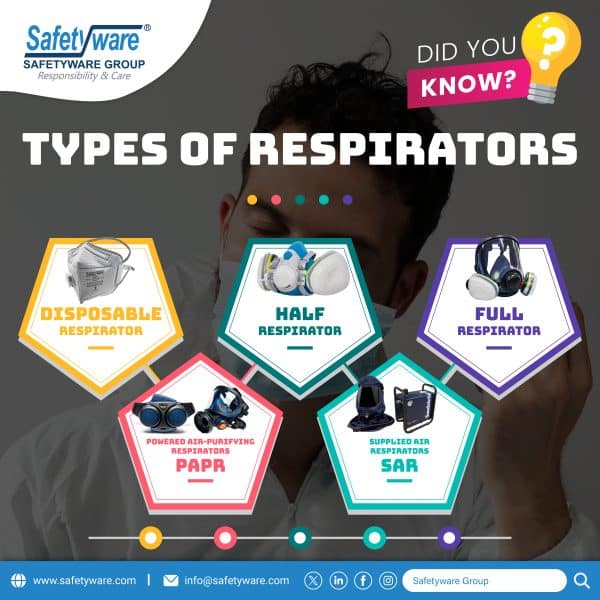Safety Knowledge
The Importance of Respiratory Protection in Hazardous Environments
In hazardous environments, ensuring the safety and well-being of workers is paramount. One critical aspect of this is respiratory protection. From airborne particles and gases to infectious agents, the air in certain work settings can pose significant health risks if inhaled unprotected. In this blog post, we’ll delve into the importance of respiratory protection and explore some key considerations for selecting the right equipment.
Understanding Respiratory Hazards
Before diving into respiratory protection, it’s crucial to understand the various hazards present in the environment. These hazards can range from particulate matter such as dust, smoke, and aerosols to chemical vapors, fumes, and biological agents. Depending on the nature of the work environment, different types of respiratory protection may be required.
Types of Respiratory Protection
1. Particulate Respirators: These devices are designed to filter out particles from the air, such as dust, pollen, and infectious agents like viruses and bacteria. They come in various forms, including disposable masks (e.g., N95 respirators) and reusable respirators with replaceable filters.
2. Gas Masks and Cartridges: In environments where chemical gases and vapors are present, gas masks equipped with appropriate cartridges are necessary. These masks provide a seal around the face to prevent inhalation of harmful substances.
3. Powered Air-Purifying Respirators (PAPRs): PAPRs use a battery-powered fan to draw contaminated air through a filter, supplying clean air to the wearer. They are suitable for environments with high concentrations of airborne contaminants or where extended periods of use are required.
4. Supplied Air Respirators (SARs): SARs deliver clean air from an external source, such as an air compressor or compressed air cylinder, to the wearer’s mask or hood. They are commonly used in confined spaces or environments with oxygen-deficient atmospheres.
Selecting the Right Respiratory Protection
When selecting respiratory protection, several factors must be considered:
· Hazard Assessment: Identify the specific respiratory hazards present in the work environment and select protection accordingly.
· Fit and Seal: Proper fit is essential for respiratory protection to be effective. Masks should create a secure seal against the face to prevent leakage.
· Comfort and Usability: Workers are more likely to use respiratory protection consistently if it is comfortable to wear for extended periods. Consider factors such as weight, strap adjustability, and breathing resistance.
· Maintenance and Training: Ensure workers are adequately trained in the proper use, maintenance, and storage of respiratory protection equipment. Regular inspection and replacement of filters and cartridges are also crucial for effectiveness.
Conclusion
Respiratory protection is a critical component of workplace safety in hazardous environments. By understanding the respiratory hazards present and selecting the appropriate protection, employers can mitigate the risk of respiratory illnesses and ensure the health and well-being of their workers. Investing in high-quality respiratory protection and providing comprehensive training demonstrates a commitment to safety that benefits both employees and employers alike.
explore more about Respiratory Protection

